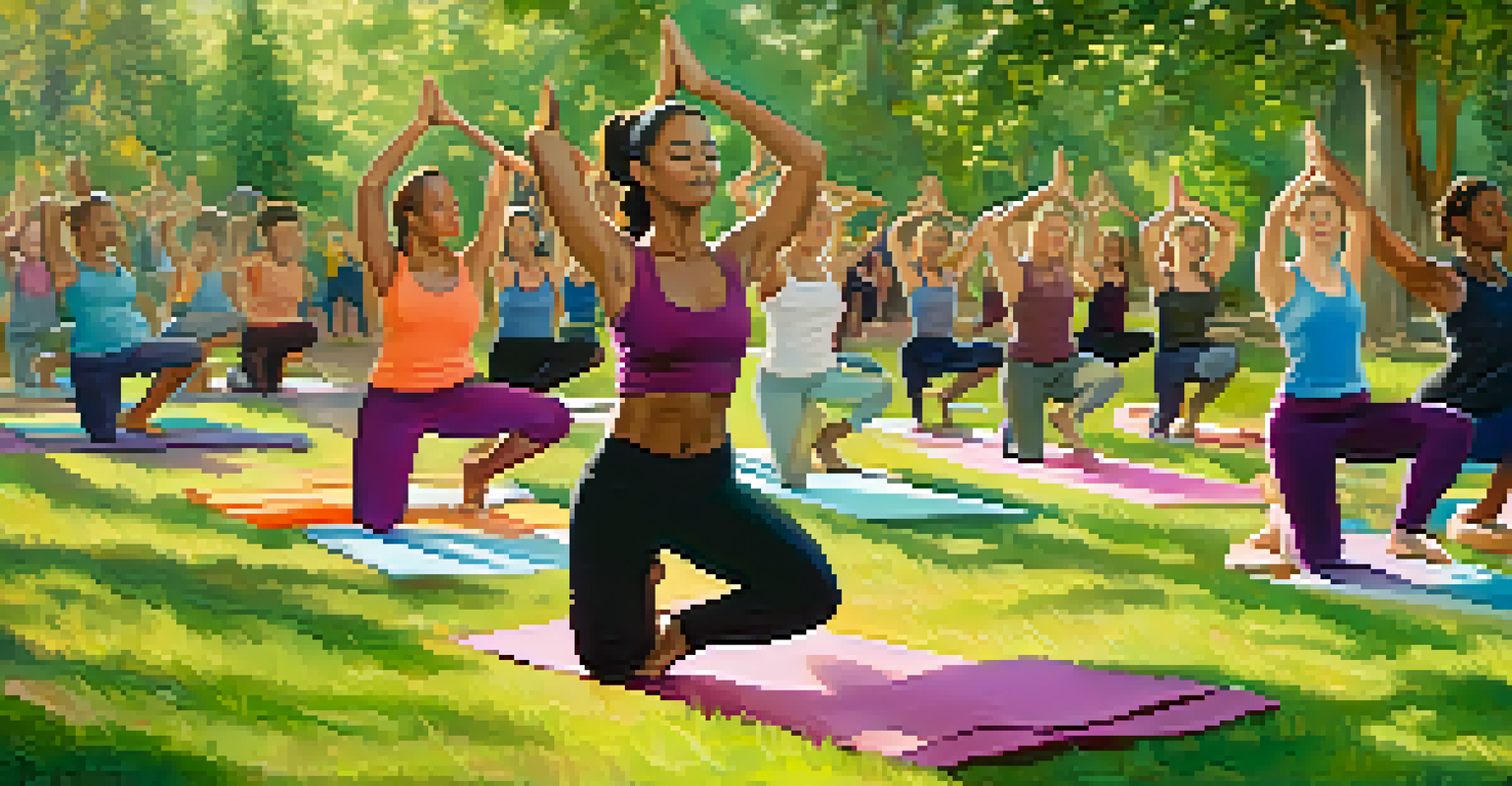Creating a Safe Space for Yoga Practice in Schools

Understanding the Importance of Safe Spaces for Yoga
Creating a safe space for yoga practice in schools is essential for students' mental and physical well-being. A supportive environment encourages students to express themselves freely and engage fully in their practice. Just like a cozy blanket on a chilly day, a safe space wraps students in comfort, allowing them to explore their limits without fear of judgment.
The body benefits from movement, and the mind benefits from stillness.
When students feel secure, they are more likely to participate actively and reap the benefits of yoga, such as improved focus and reduced anxiety. Safety in yoga also helps in building trust among peers and instructors, fostering a sense of community. After all, a group of students practicing together is like a team working toward a common goal—supporting one another.
Ultimately, prioritizing a safe space enhances students' overall experience, making yoga a positive and transformative part of their school life. By understanding the importance of this environment, educators can better implement practices that support student growth both on and off the mat.
Designing a Physically Safe Environment
A physically safe environment for yoga involves choosing the right space and equipment. It’s vital to select a location that is free from hazards, allowing students to move and explore their bodies safely. Think of it like setting up a playground—ensuring that the area is clear of obstacles helps prevent accidents and injuries during practice.

In addition to a suitable location, providing quality yoga mats and props can significantly enhance safety. These tools not only support students in achieving proper alignment but also cushion them during poses. Like a sturdy pair of shoes for running, having the right equipment can make all the difference.
Creating Safe Spaces Enhances Yoga
A supportive environment allows students to express themselves and engage fully, promoting their mental and physical well-being.
Regular maintenance of the yoga space is also crucial—cleaning mats and ensuring that the area remains clutter-free helps maintain a safe and inviting atmosphere. By focusing on these elements, schools can create a physically secure environment that allows students to fully engage in their yoga practice.
Encouraging Emotional Safety in Yoga
Emotional safety is just as important as physical safety in a yoga practice. Creating an environment where students feel comfortable sharing their feelings and experiences can be transformative. It's like having a trusted friend you can confide in; this kind of support fosters deeper connections and understanding among peers.
Yoga is not about touching your toes, it is what you learn on the way down.
To encourage emotional safety, instructors can establish ground rules that promote respect and confidentiality. This approach ensures that students feel valued and heard, allowing them to express themselves without fear of ridicule. A simple analogy here is a circle of trust—once established, it creates a safe haven for everyone involved.
Additionally, incorporating mindfulness practices, such as guided meditations or group discussions, can help students connect with their emotions. By prioritizing emotional safety, schools can cultivate a nurturing atmosphere that enhances the overall yoga experience.
Incorporating Inclusivity in Yoga Practices
Inclusivity is key when creating a safe space for yoga in schools. It’s essential to recognize that each student has unique needs and abilities, much like different pieces of a puzzle fitting together to create a complete picture. By embracing diverse backgrounds and experiences, educators can create a more enriching environment for everyone.
To promote inclusivity, yoga instructors should offer modifications and variations of poses to accommodate all students. This approach ensures that everyone can participate, regardless of their skill level or physical limitations. Think of it as a buffet—everyone should have the opportunity to enjoy the offerings, regardless of their preferences or dietary restrictions.
Inclusivity is Essential in Yoga
Recognizing the unique needs of each student fosters a richer and more engaging yoga experience for everyone.
Creating an inclusive atmosphere also involves using language that respects and honors all identities. By fostering an environment where every student feels acknowledged, schools can enhance the sense of belonging that is crucial in yoga practice.
Training Educators for Effective Yoga Instruction
Proper training for educators is vital to ensure they can create and maintain a safe space for yoga. Qualified instructors bring knowledge and experience, allowing them to guide students with confidence. It’s like having a skilled navigator on a road trip—knowing the right paths leads to a successful journey.
Educators should be trained not only in yoga techniques but also in recognizing the emotional and physical needs of their students. This holistic approach equips them with the tools to offer support when necessary, ensuring a well-rounded experience. Just as a gardener nurtures plants to help them grow, trained instructors can help their students flourish.
Ongoing professional development opportunities can further enhance educators' skills and keep them updated on best practices in yoga instruction. By investing in training, schools can ensure that their yoga programs thrive and students receive the best possible guidance.
Building Community Through Yoga in Schools
Yoga can serve as a powerful tool for building community within schools. By bringing students together for regular practice, schools create opportunities for connection and collaboration. It’s similar to how a team huddles together before a game; they build camaraderie and support one another in achieving a common goal.
Hosting events such as yoga workshops or retreats can further strengthen the sense of community. These gatherings allow students, teachers, and families to come together, share experiences, and deepen their practice. Imagine a potluck dinner—everyone brings something unique to the table, creating a rich and diverse experience for all.
Ongoing Educator Training is Key
Proper training equips educators to effectively support students, ensuring a safe and nurturing yoga environment.
Additionally, incorporating peer-led sessions can empower students to take ownership of their practice and share their insights with others. By fostering a sense of community, schools can create an environment where students feel connected and supported on their yoga journey.
Evaluating and Adapting Yoga Programs in Schools
Regular evaluation and adaptation of yoga programs are essential in ensuring their effectiveness and relevance. Gathering feedback from students, parents, and instructors can provide valuable insights into what works and what could be improved. Think of it like a road map—sometimes, detours are necessary to reach the final destination more effectively.
Schools can conduct surveys or focus groups to understand the experiences and needs of their yoga participants better. This process not only helps in identifying areas for improvement but also shows students that their input is valued. Just like adjusting a recipe based on taste tests, this iterative approach can enhance the program.

By being open to change and responsive to feedback, schools can create a dynamic yoga environment that meets the evolving needs of their community. Continuous evaluation ensures that the practice remains engaging and beneficial for all students.